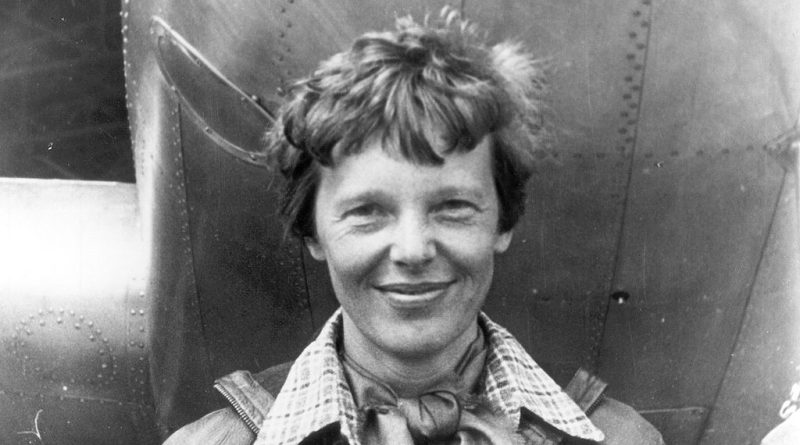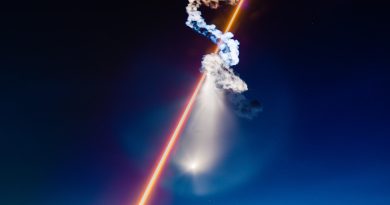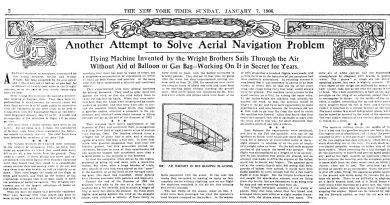How Amelia Earhart’s Spirit Lives on in Jetpack Innovation
Amelia Earhart’s pioneering spirit continues to inspire adventurers and innovators today, perhaps most vividly in the realm of personal flight—especially jetpacks. The connection between Earhart’s groundbreaking achievements in aviation and the evolving technology of jetpacks presents a fascinating blend of history and futuristic vision.
In the 1930s, Earhart shattered records and societal norms, symbolizing the potential for human flight to transcend limitations. Her flights were more than mere physical journeys; they represented the boundless nature of human aspiration. This same drive fuels today’s jetpack developers, who seek to democratize the skies in ways Earhart could have only imagined.
Jetpack technology, though still in its infancy, echoes Earhart’s adventurous spirit. Just as Earhart ventured into the unknown with her Lockheed Electra, modern jetpack pilots test the limits of personal flight, pushing boundaries with every ascent. The parallels between Earhart’s propeller-driven flights and the roar of a jetpack’s engines are emblematic of a shared human desire to explore and expand our horizons.
Furthermore, Earhart’s legacy is not just about her achievements but also her undaunted courage in the face of adversity. Similarly, the development of jetpack technology faces significant challenges, from safety concerns to regulatory hurdles. Yet, just as Earhart persevered, today’s pioneers continue to forge ahead, driven by the same indomitable spirit.
In essence, the story of Amelia Earhart and the development of jetpacks is a narrative of human progress. It’s a testament to our unyielding desire to soar above constraints, whether they are societal, gravitational, or technological. As we reflect on Earhart’s life and dream of a future where jetpacks are as common as airplanes, we are reminded that the sky has never been the limit, but rather a canvas for our imagination and determination.
Biography of Amelia Earhart
Amelia Earhart’s life, stretching from her birth in 1897 to her mysterious disappearance in 1937, is a tale interwoven with courage, determination, and the relentless pursuit of dreams. Born in Atchison, Kansas, Earhart’s childhood was marked by a sense of adventure and a fascination with the rapidly evolving world of aviation. This curiosity burgeoned into a passion as she grew older, leading to her first flight in 1920—a moment that would forever alter the course of her life.
In the ensuing years, Earhart’s aviation career soared. She became the first woman to fly solo across the Atlantic Ocean in 1932, a feat that earned her international acclaim and symbolized the breaking of gender barriers in a male-dominated field. Her achievements in the sky served as a beacon of possibility, not just for women, but for all who dared to dream big.
Earhart’s final adventure, an ambitious attempt to circumnavigate the globe, commenced in 1937. Tragically, she and her navigator, Fred Noonan, vanished over the Pacific Ocean, leaving behind a legacy shrouded in mystery and inspiration.
This pioneering spirit of Amelia Earhart resonates deeply in the ongoing development of jetpack technology. Jetpacks, once relegated to the realm of science fiction, are now edging towards reality, propelled by the same desire to conquer the skies that Earhart embodied. Modern engineers and adventurers are driven by a similar ambition to redefine the limits of personal flight, channeling Earhart’s courage and tenacity in the face of technological and regulatory challenges.
The connection between Earhart’s life and the evolution of jetpacks is more than a mere juxtaposition of historical and modern flight. It represents the enduring human aspiration to rise above the earth, to explore, and to push beyond the known boundaries. Earhart’s journey from a curious child in Kansas to a trailblazing aviator mirrors the trajectory of jetpack technology—from imaginative concept to tangible reality.
As we continue to develop and refine jetpacks, we not only advance technology but also pay homage to Earhart’s legacy. Her life’s story, marked by both remarkable achievements and an enigmatic end, continues to inspire generations to look skyward, not as mere spectators, but as participants in the unending quest to fly higher, farther, and with boundless freedom.
Fred Noonan
Fred Noonan was an American flight navigator known for his work with Amelia Earhart. He was born in 1893 and had a diverse career in aviation, including time as a seaman, which gave him valuable navigational skills. Noonan eventually became a licensed ship’s captain and later transitioned into aviation, where he developed a reputation for his expertise in celestial navigation.
Noonan’s skills in air navigation were highly respected in the early days of flight when long-distance air travel was still a burgeoning field. He joined Pan American World Airways (Pan Am), where he worked on some of the first transoceanic flights, helping to establish many of Pan Am’s seaplane routes across the Pacific Ocean.
His most famous role came as the navigator for Amelia Earhart’s ill-fated attempt to circumnavigate the globe in 1937. Noonan was selected for his extensive experience in both marine and flight navigation, which was crucial for the long overwater legs of Earhart’s flight plan. Unfortunately, during this attempt, Earhart and Noonan disappeared over the central Pacific Ocean near Howland Island. The circumstances of their disappearance remain one of the great unsolved mysteries of the 20th century. Despite extensive searches, neither their bodies nor the wreckage of their plane, a Lockheed Electra, were ever conclusively found.
Amelia’s Interest in Aviation
Amelia Earhart’s interest in aviation was sparked somewhat later in her life, not during her childhood as is often the case with many aviation pioneers. This interest was ignited in December 1920 when Earhart, who was living in California at the time, attended an aviation fair at Long Beach. It was at this event that she took her first airplane ride, which lasted just 10 minutes but had a profound impact on her.
This brief flight was with pilot Frank Hawks, who later became a well-known air racer. Earhart later described the experience as life-changing, saying, “By the time I had got two or three hundred feet off the ground, I knew I had to fly.” This pivotal moment led her to pursue flying seriously. She took flying lessons from Neta Snook, a female aviator who was one of the few women in the field at the time.
Earhart’s dedication to flying was immediate and intense. She worked various jobs, including as a photographer, truck driver, and stenographer, to save money for flying lessons. Her commitment and passion for aviation quickly became apparent as she sought to make her mark in a field dominated by men, setting numerous records and achieving many firsts for women in aviation.
Overcoming Gender Barriers in Aviation
Amelia Earhart overcame gender barriers in aviation through a combination of her remarkable skills, unwavering determination, and strategic public engagement. At a time when aviation was largely a male-dominated field, Earhart’s approach was multifaceted and pioneering.
Firstly, her skills and accomplishments in the air were undeniable. She proved herself as a competent and daring aviator by setting records and achieving feats that garnered respect from both her male counterparts and the public. Her first major achievement as a pilot, when she became the first woman to fly solo across the Atlantic in 1932, was a significant statement of her capabilities. Such achievements not only bolstered her reputation but also challenged prevailing stereotypes about women’s abilities in such a demanding field.
In addition to her flying skills, Earhart’s determination played a crucial role. She faced numerous obstacles and skepticism but remained focused on her goals. She worked various jobs to afford flying lessons and invested herself fully in becoming an expert pilot. Her persistence in the face of challenges was a powerful message that women were equally capable of excelling in aviation.
Moreover, Earhart was a savvy public figure who used her growing fame to advocate for women in aviation and other fields. She wrote books, gave lectures, and participated in interviews, using these platforms to speak about women’s capabilities and rights. She became a role model and an icon, inspiring other women to pursue their ambitions, aviation-related or otherwise.
Finally, Earhart’s involvement with organizations that supported women in aviation also played a key role. She was a member of the Ninety-Nines, an international organization of female pilots, where she served as the first president. Through this and other engagements, she worked to create opportunities and support networks for women in aviation, helping to pave the way for future generations of female aviators.
Overall, Amelia Earhart’s approach to overcoming gender barriers was comprehensive. It combined her personal achievements, relentless determination, strategic use of her public image, and active involvement in supporting and advocating for women in aviation.
The Ninety-Nines
The Ninety-Nines is an international organization of female pilots that was established in 1929 to support and advance women in aviation. The group’s name derives from the number of charter members: out of 117 licensed female pilots in the United States at the time, 99 pilots joined the organization. Amelia Earhart, a prominent member and a trailblazer in aviation, was elected as the organization’s first president.
The formation of the Ninety-Nines represented a significant milestone in the history of aviation and women’s rights. At a time when women faced considerable obstacles in both aviation and society at large, the Ninety-Nines provided a platform for mutual support, advocacy, and education. The organization aimed to promote public understanding of aviation and the capabilities of women pilots, provide networking opportunities, and support women who aspired to become pilots.
Over the decades, the Ninety-Nines have grown and continued to play a vital role in supporting women in the field of aviation. The organization offers scholarships, mentoring, and resources for female pilots and has members in countries around the world. The Ninety-Nines remain dedicated to the advancement of women pilots, honoring the legacy of its early members and contributing to the ongoing journey of women in aviation.
Lessons For Modern-Day Jetpack Pilots and Engineers
Jetpack pilots and engineers can draw several valuable lessons from Amelia Earhart’s life and career, which are highly relevant even in the context of modern aviation technology like jetpacks.
The first and foremost lesson is the importance of courage and pioneering spirit. Earhart ventured into a field that was not only technically challenging but also socially restrictive, especially for women. Her ability to break barriers and set records shows the value of determination and the willingness to venture into uncharted territories. For jetpack engineers and pilots, this translates into the courage to innovate, to try new designs, and to push the boundaries of what is considered possible.
Another significant aspect of Earhart’s legacy is her meticulous approach to planning and preparation. Despite the relatively primitive navigation tools of her time, she undertook complex, long-distance flights, which required careful planning. This attention to detail and thorough preparation is crucial for anyone working with advanced aviation technologies like jetpacks, where safety and precision are paramount.
Earhart also exemplified the importance of adaptability and learning. Aviation in the early 20th century was a rapidly evolving field, and Earhart continuously adapted her skills to new aircraft and new challenges. For jetpack pilots and engineers, staying abreast of technological advancements and being willing to continuously learn and adapt is essential in a field that is still in its developmental stages.
Moreover, Earhart’s public engagement and advocacy for aviation can teach modern aviators and engineers the importance of public communication and education. By promoting aviation and inspiring others, she played a key role in the growth of the field. Similarly, those in the field of jetpack technology can benefit from actively engaging with the public, sharing their knowledge and excitement, and inspiring the next generation of aviators and engineers.
In summary, Amelia Earhart’s story offers valuable lessons in courage, meticulous planning, adaptability, and public engagement—qualities that are essential for those involved in the cutting-edge field of jetpack technology.
Conclusion
The life story of Amelia Earhart, intertwined with the human desire for flight, whether through airplanes or modern innovations like jetpacks, offers several profound conclusions about human nature and our relationship with the skies.
Firstly, Earhart’s story underscores the innate human desire for exploration and pushing boundaries. From the earliest days of the Wright brothers to today’s jetpack pilots, there is a continuous thread of curiosity and the urge to conquer new frontiers. Earhart’s adventures and achievements exemplify this longing to venture into the unknown, to challenge ourselves, and to expand our horizons, a sentiment that continues to drive advancements in aviation technology.
Secondly, her life reflects the importance of courage and resilience in the face of challenges. Earhart pursued her passion for aviation in an era when it was largely a male-dominated field and faced numerous societal and technical obstacles. Her ability to persevere, break records, and set new standards speaks to a universal human quality of resilience in the pursuit of dreams. This quality is equally relevant today for those experimenting with and advancing the technology of jetpacks and other forms of personal flight.
Furthermore, Earhart’s story highlights the role of innovation and technological advancement in realizing human aspirations. Just as Earhart utilized the best available technology of her time to break new ground in aviation, modern engineers and pilots use cutting-edge technology to further expand the boundaries of flight. Her journey from propeller-driven aircraft to contemplating transoceanic flights mirrors the evolution from traditional airplanes to the development of jetpacks, showcasing the continuous evolution of flight technology in fulfilling human desires.
Moreover, Earhart’s life and mysterious disappearance also emphasize the acceptance of risk inherent in the pursuit of groundbreaking achievements. Her final flight, which ended in an enigma, symbolizes the uncertainties and risks that come with venturing into uncharted territory. This acceptance of risk is a necessary component of progress in any field, including the development of jetpacks and other novel forms of aviation.
In conclusion, Amelia Earhart’s life story, paralleled with the evolution from airplanes to jetpacks, encapsulates the human spirit’s unyielding quest for exploration, the courage to face and overcome obstacles, the relentless drive for technological advancement, and the acceptance of risk in the pursuit of groundbreaking achievements. These elements continue to propel humanity’s age-old fascination with flight and our ever-evolving journey through the skies.



